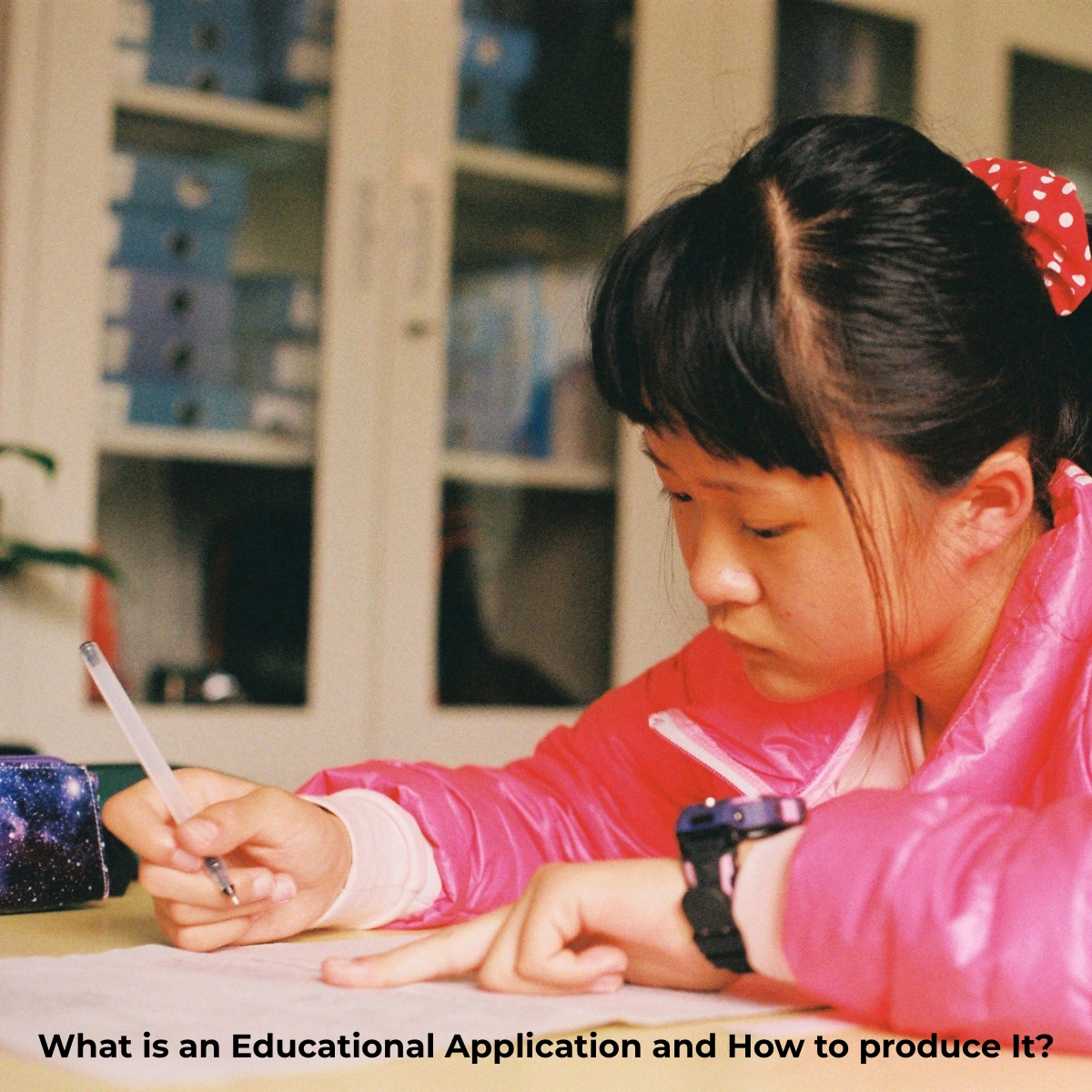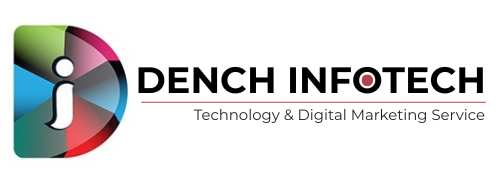
What is an Educational Application and How to produce It?
- March 04, 2025
Education has evolved with technology, shifting from traditional classroom- based learning to digital platforms that make knowledge accessible to anyone, anywhere. The emergence of Educational Technology (EdTech) has revolutionized literacy, furnishing flexible, substantiated, and engaging experience for scholars, professionals, and lifelong learners. One of the most significant inventions in this space is educational operations — software programs designed to facilitate learning through interactive content, assessments, and structured courses.
Still, this companion will give a comprehensive roadmap,
covering what an educational operation is, If you’ve ever considered developing
an educational app.
What's an Educational Application?
An educational operation (EdTech app) is a software tool
designed to enhance knowledge accession, skill development, and learning
experiences. These apps feed to scholars, preceptors, commercial learners, and
tone- learners across colorful subjects and disciplines.
Educational apps range from simple flashcard apps to AI-
powered adaptive learning platforms. Whether it’s a language- learning
platform, a Learning Management System (LMS) for universities, or an advanced
coding tutorial app, EdTech teaching apps serve different purposes and cult.
Types of Educational Applications
Understanding different types of educational operations helps
in choosing the right order when developing one. Below are the most popular
orders
1. E-Learning Apps – Provide structured courses, video
lectures, and Certifications (e.g., Coursera, Udemy, Skillshare).
2. Gamified Learning Apps – Incorporate game mechanics
like prices and leaderboards to make learning fun (e.g., Duolingo, Kahoot!).
3. Language Learning Apps – Help user learn new
languages through AI- driven recommendations and speech recognition (e.g.,
Rosetta Stone, Babbel).
4. Skill Development Apps – Educate user new skill
like rendering, music, or digital marketing (e.g., Solo Learn, Yousician,
Codecademy).
5. Classroom Management Apps – Enable preceptors to
manage assignments, attendance, and communication (e.g., Google Classroom,
Edmodo, Moodle).
6. Assessment & Test Preparation Apps – Offer mock
tests, quizzes, and study materials (e.g., Khan Academy, Quizlet, Unacademy).
7. Corporate Training Apps – Designed for employee
training and skill development (e.g., LinkedIn Learning, Udacity for Business).
8. Special Needs Education Apps – Provide availability
features for learners with disabilities (e.g., Voice Dream Reader,
Proloquo2Go).
opting the right type of educational app depends on your
target followership and learning objects.
Advantages of an Educational Application
Developing an educational app isn’t just about convenience it
offers many benefits for learners, preceptors, and businesses.
For Learners:
• Flexible Learning – Access content anytime,
anywhere.
• Interactive & Engaging Content – Incorporates
videos, quizzes, and gamification.
• Individualized Learning – AI- driven recommendations
adapt learning paths.
• Affordable – Further cost-effective than traditional
literacy.
• Microlearning openings – Learn in bite- sized,
digestible formats.
For Educators:
• Improved Student Engagement – Interactive tools make
learning more dynamic.
• Data- Driven perceptivity – Track pupil progress
using analytics.
• Scalability – Reach scholars beyond a physical
classroom.
• AI- Based training & Adaptive Learning –
Customizes content based on pupil progress.
For Businesses & Entrepreneurs:
• Growing Market Demand – The EdTech assiduity is
expanding rapidly.
• Multiple Monetization Models – Generate profit
through subscriptions, advertisements, and in- app purchases.
• Brand Authority – Positioning as an educational
leader in the assiduity.
• Opportunities in Mobile Learning (M- literacy) –
With adding smartphone penetration, mobile education is booming.
How to produce an Educational Application
Developing an educational app requires careful planning, design, and prosecution. Below are seven essential way to make a successful EdTech operation.
Step 1: Identify Your Target followership
Understanding your target user (scholars, professionals, or preceptors) helps shape your app’s content, design, and features. Define their learning needs, pain points, and prospects before development.
Step 2: Choose the Right Features
A successful educational app must include features that enhance
user experience and learning issues. Some crucial features include
• User-Friendly Interface – Simple navigation for
flawless learning.
• Video & Audio Lesson – Rich media content for
better engagement.
• Gamification Elements – Prices, points, and
leaderboards to motivate learners.
• Quizzes & Assessments – Test knowledge retention
through interactive conditioning.
• Progress Tracking & Analytics – Monitor learning
progress.
• Offline Access – Enable learning without internet
reliance.
• AI- Based Personalization – Suggest courses based on
user learning.
• Virtual Reality (VR) & Augmented Reality (AR) Support – Enhance interactive literacy.
Step 3: elect the Right Technology Stack
Choosing the right technology stack ensures your app runs
easily
• Programming Languages: Swift (iOS), Kotlin (Android),
Reply Native(cross-platform)
• Backend Development: Node.js, Django, Firebase
• Database Management: MySQL, PostgreSQL, MongoDB
• Cloud Services: AWS, Google Cloud, Azure
• Security Compliance: Ensure FERPA, GDPR, and COPPA compliance.
Step 4: Design an Intuitive UI/ UX
A well- designed app enhances stoner retention and
engagement. crucial UI/ UX principles
• Minimalist Design – Avoid distractions, use
intuitive navigation.
• High Readability – Use clear fonts and colors.
• Engaging Animations & Micro Interactions – Ameliorate user Interaction.
Step 5: Develop and Test Your App
Work with professed developers to make a completely
functional app. Testing ensures
• Bug-Free Performance – Identifies issues before
launch.
• Cross-Device Comity – Work easily on different devices.
• User Feedback Integration – Ameliorate based on beta testing.
Step 6: Monetization Strategies
Decide on a monetization model
• Freemium Model – Basic features are free; advanced
features are paid.
• Subscriptions – Yearly or monthly access to content.
• Announcements – In- app advertisements generate
profit.
• One- Time Purchase – User pay formerly for
continuance access.
• In- App Purchases – Buy additional features or content.
Step 7: Launch and Promote Your App
Once your app is ready, launch it on the Google Play Store
and Apple App Store. Effective marketing strategies include
• SEO Optimization – Target applicable keywords like
EdTech, e-learning, and mobile literacy.
• Social Media Marketing – Promote on LinkedIn,
Twitter, and Facebook.
• Influencer Partnership – Unite with preceptors and
influencers.
• Email Campaign – Reach potential user through
newsletters.
Future Trends in Educational Apps
The future of EdTech is shaped by arising technologies. Here
are crucial trends
• Artificial Intelligence (AI) Teachers – Chatbots
furnishing 24/7 personalized learning.
• Virtual Reality (VR) Classrooms – Immersive learning
experiences.
• Blockchain for Credentialing – Secure digital
instruments.
• Metaverse in Education – Virtual surroundings for
interactive learning.
• Adaptive Learning – AI- driven customization for
pupil requirements.
Conclusion Build Your Educational App Today!
With the EdTech industry booming, now is the stylish time to develop an educational operation. Whether you’re a preceptor, entrepreneur, or business, an EdTech app can drive meaningful impact while generating profit.
At Dench Infotech, we specialize in custom educational app development service. If you are ready to turn your idea into a reality, book a consultation
today and let's produce an innovative learning experience together!

SHARE THIS BLOG